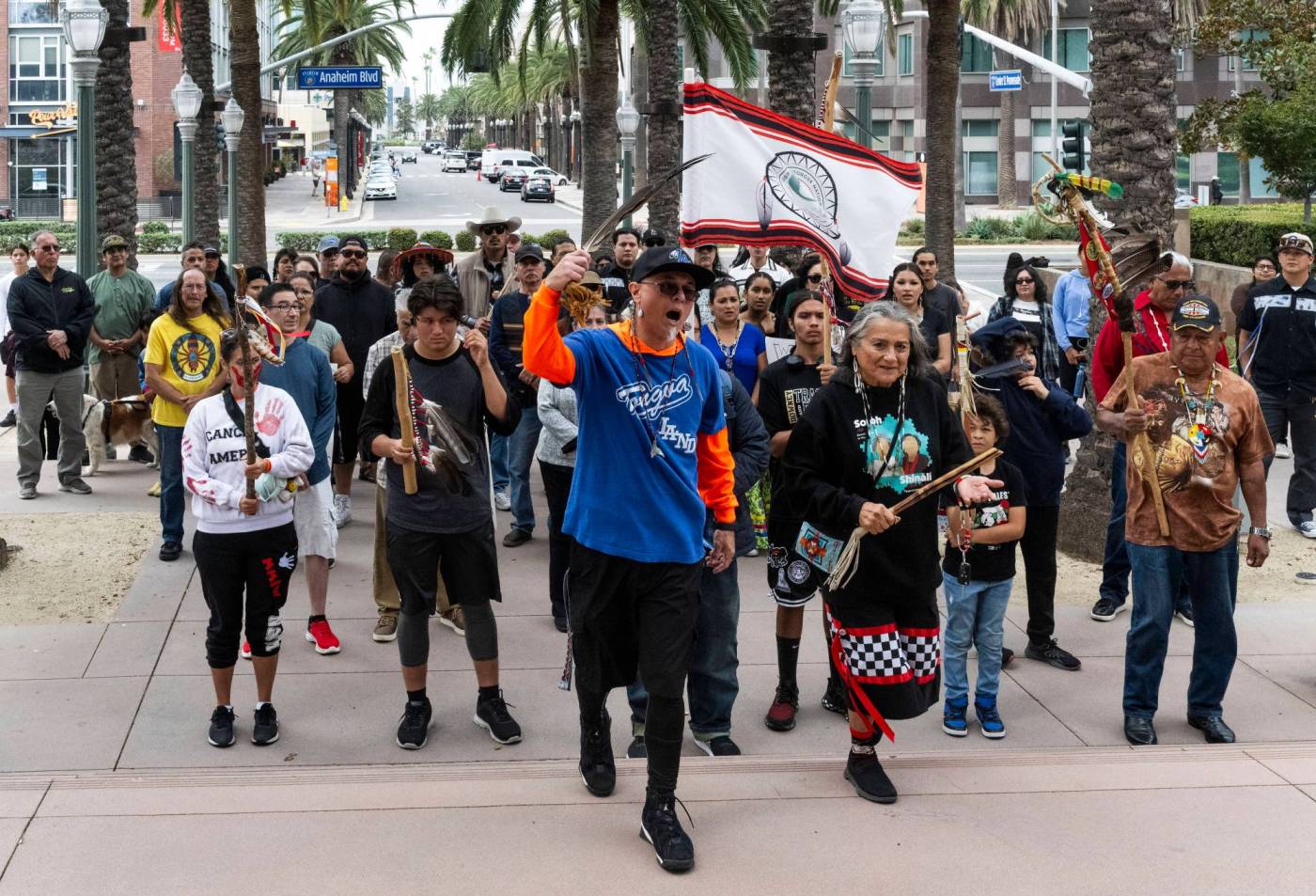Virginia Carmelo, a third-generation Orange County resident, waited on the steps of Anaheim City Hall on Monday afternoon, Oct. 13, to celebrate with the city’s sixth annual Indigenous Peoples’ Day.
While she waited, her children and grandchildren were completing a prayer walk from the Anaheim Coves Lincoln Trailhead to City Hall — a 5-kilometer trek honoring the Gabrielino-Tongva Nation and indigenous culture and history.
Alongside her, a crowd of a hundred or so community members wielded signs and cameras, cheering in support of the walkers and the occasion they were commemorating.
“It’s just a recognition of all the native people, the ancestors, and to celebrate our day,” Carmelo said.
Present-day Orange County’s early inhabitants were the Tongva and Acjachemen people hundreds of years ago. Carmela, herself, is a Tongva member.
Across the nation, many cities have opted to celebrate Indigenous Peoples’ Day instead of Columbus Day, historically observed Oct. 13, as part of an effort to recognize colonialism and the Native-American community’s resilience.
There are 574 recognized indigenous tribes in the United States. The Tonga village, Hutuukuga, stood where later became present-day Anaheim.
Anaheim’s celebration on Monday featured the morning prayer walk, a land acknowledgment program at City Hall and finished at the Downtown Community Center with a closing prayer and potluck, with food provided by local restaurants and community members.
Shannon Rivers, with the Akimel O’otham, or Pima, said activists had been in conversation with the city for two years before the inaugural Indigenous Peoples’ Day was recognized in 2019.
Historically known as the “river people,” the Akimel O’odham are an indigenous people of the Sonoran Desert in Mexico and Arizona, where Rivers lived before moving to Southern California.
The annual Indigenous Peoples’ Day is just one marker, Rivers said, in the much longer history of Indigenous activism and recognition.
“We are looking for more than just Indigenous Peoples’ Day recognition. We want policy change, land recognition, educational systems to be different,” Rivers said. “We want to remind people that are driving down the street that indigenous people are still here.”








